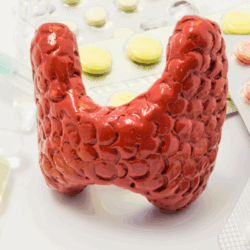As a high-performer, you’re wired to find the most effective path to any goal. You optimize your schedule, your investments, and your career strategy—so why not your health? When it comes to daily movement, more isn’t always better. While the fitness world has long praised the 10,000-step goal, new data shows the return on your investment significantly diminishes after a certain point. Compelling research now suggests that hitting a consistent 7000 steps a day delivers the most critical health benefits, including a dramatically lower risk of early death. This is about working smarter, not harder, to build a foundation for lasting health and performance.
Why 7,000 Steps a Day Might Be the Key to a Healthier, Longer Life
By Joe Miller, Founder of 1st Optimal
For decades, we’ve been told that 10,000 steps a day is the golden number for health and longevity. But where did this number come from, and is it really necessary to hit that target to experience meaningful results?
Recent research says no.
Emerging science is turning that old advice on its head. Instead of 10,000 steps, just 7,000 steps per day may be enough to dramatically reduce your risk of early death and boost cardiovascular health. For those juggling work, family, and personal wellness, that’s a game-changer.
Let’s dive into the latest data, celebrity examples, and actionable strategies to show how this simple daily goal could unlock a longer, healthier life.
Was the 10,000-Step Goal Just a Marketing Ploy?
Most people are surprised to learn that the 10,000-step goal isn’t based on science. It originated in the 1960s as part of a marketing campaign for a Japanese pedometer called the “Manpo-kei,” which literally means “10,000 steps meter.” While it caught on as an easy-to-remember target, it wasn’t supported by clinical data at the time.
Fast forward to today, and researchers are finally studying what really matters when it comes to daily movement, and it turns out, fewer steps still go a long way.
Why 7000 Steps a Day is the New Magic Number
A groundbreaking 2021 study published in JAMA Network Open tracked over 2,100 adults for more than a decade. Those who averaged at least 7,000 steps per day had a 50–70% lower risk of mortality compared to those who walked less than 5,000 steps per day. Importantly, benefits plateaued after about 7,500 to 8,000 steps, suggesting that more isn’t always necessary (source: JAMA Network】.
Similar findings have been echoed in the American Heart Association’s latest guidance, which now focuses more on movement quality and consistency than arbitrary step totals (source: heart.org).
### The Science-Backed Sweet Spot for Heart Health
So, what makes 7,000 steps the new benchmark? It comes down to compelling, long-term data. A significant study published in JAMA Network Open followed over 2,100 adults for more than a decade to understand the real-world impact of daily movement. The results were clear: individuals who averaged at least 7,000 steps per day had a 50–70% lower risk of early death compared to their less active peers. What’s even more interesting for high-performers looking for efficiency is that the study found the health benefits tended to plateau after about 7,500 steps. This means you don’t necessarily need to push for 10,000 or more to achieve major health gains, making 7,000 an effective and attainable daily goal.
### How Every Step Adds Up to Longevity
While having a specific target like 7,000 steps is helpful, the underlying principle is about building a foundation of consistent movement for long-term health. It’s about shifting your baseline from sedentary to active in a way that feels sustainable. This philosophy is central to how we approach wellness at 1st Optimal, where we use data to create personalized health strategies that fit into your life. Walking is a perfect example of a simple, measurable habit that compounds over time to support everything from cardiovascular health to mental clarity. It’s not about a single heroic workout; it’s about the small, consistent actions you take every day that ultimately define your healthspan and performance for years to come.
#### Insights from a Major Health Study
This modern approach to movement is echoed by leading health organizations. The American Heart Association, for instance, has shifted its guidance to emphasize the quality and consistency of physical activity rather than focusing on a single, arbitrary number. This highlights that even a modest increase in your daily step count can lead to significant health improvements. It’s a welcome change that moves us away from an all-or-nothing mindset. For busy professionals, this is great news. It means that parking a little further away, taking the stairs, or going for a brief walk during a call all contribute meaningfully to your overall health and longevity goals.
What Happens Inside Your Body When You Walk?
Walking helps regulate blood glucose levels, improve insulin sensitivity, reduce triglyceride levels, and lower inflammation. According to a 2022 study in the journal Diabetologia, walking just 10 minutes after a meal can significantly reduce postprandial blood sugar spikes (source: Diabetologia).
This matters for both weight loss and long-term health. Chronically elevated glucose can contribute to type 2 diabetes, obesity, and even cognitive decline (source: NIH).
Strengthening Your Heart and Bones
Beyond managing your weight, a consistent walking habit is one of the most effective ways to build a resilient cardiovascular system. Think of it as a long-term investment in your body’s infrastructure. Research shows that hitting at least 7,000 steps daily can lower your risk of dying prematurely by a staggering 50% to 70%. This simple activity works quietly in the background to help regulate blood pressure, cholesterol, and blood sugar—all critical markers for longevity and peak performance. It’s a foundational practice that supports everything else you do for your health, from nutrition to more intense workouts, ensuring your heart and bones remain strong for years to come.
Improving Your Mind and Mood
The benefits of walking extend far beyond the physical. A daily walk is a powerful tool for managing the mental demands of a high-stakes career and busy life. Stepping away from your desk for a brisk walk can act as a mental reset, helping to clear your head and process thoughts. Studies confirm that physical activity like walking can significantly improve your mood and reduce symptoms of anxiety and depression. This isn’t just about feeling happier; it’s about building mental resilience. By helping to regulate stress hormones like cortisol, walking supports sharper focus and better decision-making, allowing you to return to your work with renewed clarity and energy.
Pace vs. Volume: What Matters for Your Goals?
When it comes to walking, a common question is whether it’s better to walk faster or simply walk more. The answer really depends on what you’re trying to accomplish. Your goal—whether it’s living a longer, healthier life or improving your current fitness level—will determine if you should focus on your step count or your speed. Both have their place in a well-rounded wellness plan, but they serve slightly different purposes. Understanding this distinction can help you tailor your daily movement to get the results you want without adding unnecessary stress to your already busy schedule.
For Longevity, Consistency Is Key
If your primary goal is to support long-term health and longevity, the science is clear: consistency trumps intensity. A landmark study found that for adults between the ages of 38 and 50, walking just 7,000 steps per day could lower the risk of dying too soon by an incredible 50% to 70%. What’s most revealing is that the study found it was the total number of steps that mattered, not how fast people walked. This is great news for busy professionals. It means you don’t need to block out an hour for a power walk; you can accumulate those steps throughout your day. Every walk to grab a coffee, every time you take the stairs, and every quick stroll during a phone call adds up to that life-extending target.
For Fitness, Pick Up the Pace
While step volume is key for longevity, pace becomes much more important if your goals are centered on fitness, such as improving cardiovascular endurance or supporting weight management. A study from the National Heart, Lung, and Blood Institute (NHLBI) noted that while step intensity didn’t change mortality risk, it’s still a critical factor for other health outcomes. Increasing your pace elevates your heart rate, turning a casual walk into a moderate-intensity workout. This process burns more calories, strengthens your heart muscle, and improves your body’s ability to use oxygen. So, if you’re training for a 5K or focusing on body composition, incorporating periods of brisk walking is a highly effective strategy.
Beyond Step Counting: A Time-Based Approach
Let’s be honest, tracking every single step isn’t for everyone. If you find it more motivating to watch the clock than a step counter, you can focus on time instead. The general guideline for adults is to get 150 minutes of moderate-intensity activity per week, which breaks down to just over 20 minutes a day. Research also shows that even small increases in daily steps can make a big difference, so every minute of movement counts. You can hit this target with a brisk 30-minute walk five days a week or by splitting it into smaller, 10-minute walks when you can fit them in. The best approach is the one that feels sustainable for you.
Is 7,000 Steps the Right Goal for Everyone?
We’ve established that 7,000 is a powerful and science-backed number, but is it the perfect target for every single person? As with most things in health, the answer is nuanced. Factors like your age, current fitness level, and specific wellness goals all play a role in defining what’s optimal for you. While 7,000 steps is an excellent baseline, it’s helpful to understand how it applies to your unique circumstances. Thinking through these factors can help you set a daily movement goal that is both effective and realistic for your life.
How Age Can Adjust Your Target
The most compelling research on the 7,000-step benchmark was centered on middle-aged adults. A major study highlighted in The Washington Post showed this daily count was particularly effective at reducing mortality risk in this demographic. This makes it a highly relevant and achievable goal for professionals in their 30s, 40s, and 50s. For older adults, health benefits can begin with even fewer steps, while younger individuals may naturally hit higher numbers without trying. The key takeaway is that 7,000 steps isn’t an absolute mandate but a science-backed sweet spot for the age group most often juggling demanding careers and family responsibilities, offering a significant health return on a manageable daily investment.
A Universal Benefit for Men and Women
One of the best things about walking is that its benefits are not exclusive to one gender. The same research confirmed that taking around 7,000 to 8,000 steps per day provides powerful health advantages for both men and women. This simple, accessible form of exercise is a universally effective tool for building a strong foundation for long-term health. While the goal is universal, understanding your body’s unique needs is what truly refines your wellness strategy. At 1st Optimal, we use comprehensive lab testing to see what’s happening on the inside, from hormone levels to metabolic markers. This data helps you understand *why* consistent movement is so critical for your personal health and allows for a truly tailored approach to your well-being.
A Lesson from Jennifer Aniston’s Walking Routine
Jennifer Aniston is known for her lean physique well into her 50s, and walking plays a key role. In interviews, Aniston has credited her 10-10-10 routine (10 minutes of walking, 10 minutes of resistance, 10 minutes of core work) as a sustainable part of her longevity-focused wellness plan (source: Women’s Health Mag). Her approach proves that short, regular activity adds up.
How We Help You Make Every Step Count
At 1st Optimal, we’ve integrated smart movement strategies into our personalized health programs.
Here’s How We Help:
- Daily Step Tracking: Using wearable devices and connected apps, we monitor and analyze your daily movement.
- Metabolic Testing: Our team measures your resting metabolic rate and calorie output to personalize your caloric needs and fat loss strategies.
- Nutrition Coaching: Tailored plans based on your BMR, genetics, hormone levels, and lifestyle, paired with precise macronutrient ratios and advanced supplements.
- Hormone Optimization: Low energy and poor recovery can be linked to imbalanced thyroid, testosterone, or cortisol. Our diagnostics identify and treat these issues.
🔗 Learn more about the 1st Optimal Nutrition Blueprint for a step-by-step plan on how to balance calories, hormones, and daily activity for sustainable health.
Understanding Your Baseline Before You Begin
Before you lace up your sneakers and commit to a new walking routine, it’s smart to know your starting point. This is about more than just how far you can walk today; it’s about understanding your body’s unique internal landscape, especially if you’re managing a demanding career or haven’t been active for a while. A major 2021 study in JAMA Network Open found that while 7,000 steps a day significantly lowered mortality risk, the benefits leveled off after about 8,000 steps. This shows that the “more is better” mindset doesn’t always apply. A personalized approach is far more effective. That’s why at 1st Optimal, we start with comprehensive lab testing. By establishing a clear health baseline—from hormone levels to metabolic markers—we ensure your fitness plan is built on a solid foundation, perfectly aligned with your body’s real needs.
10 Easy Ways to Get More Steps In
- Walk after every meal for 10 minutes.
- Pace during calls or meetings.
- Set hourly alarms to remind you to move.
- Take the stairs instead of elevators.
- Walk your dog longer or add a second loop.
- Use a fitness tracker like Fitbit, WHOOP, or Apple Watch.
- Join a step challenge on MyFitnessPal or Strava.
- Make it social, walk with a friend or loved one.
- Park farther away when running errands.
- Reward milestones (not with food!), buy new shoes or workout gear.
Start with an Extra 10 Minutes
If hitting 7,000 steps feels daunting, let’s reframe the goal. Start by adding just 10 minutes of walking to your day. This small change has a surprisingly powerful impact, especially on your metabolic health. Research shows that a brief walk after meals can significantly manage blood sugar spikes—a key factor in maintaining stable energy and preventing the metabolic issues that lead to weight gain. For busy professionals, this is one of the most efficient ways to support your body’s systems without overhauling your schedule.
This 10-minute habit is also a stepping stone toward the larger goal of longevity. A landmark study that followed over 2,100 adults for a decade found that reaching at least 7,000 steps per day was associated with a 50–70% lower risk of early death. An extra 10-minute walk adds about 1,000 steps to your daily total, making that 7,000-step target much more attainable. It’s a practical strategy that proves you don’t need extreme measures to achieve meaningful, long-term health improvements.
So, Is 7000 Steps a Day Good for You?
|
Goal |
Daily Step Target |
|
Sedentary |
< 5,000 |
|
Low Active |
5,000–7,499 |
|
Moderately Active |
7,500–9,999 |
|
Active |
10,000+ |
(Source: CDC & NIH)
When a Good Walk Is Better Than a Gym Session
High-intensity workouts have their place, but NEAT (Non-Exercise Activity Thermogenesis), like walking, standing, or even house cleaning, can account for up to 15% of daily calorie burn for active people (source: Mayo Clinic). That’s why consistent low-intensity movement is so critical for fat loss, especially during hormone shifts in midlife.
What We Can Learn from Terry Crews’ Walking Habit
Terry Crews, actor and former NFL player, is known for his lean, muscular build in his 50s. One of his key habits? Walking every day in a fasted state. Crews has said in interviews that he walks for 30–45 minutes every morning, which helps burn fat, clear his mind, and maintain steady energy (source: Men’s Health).
Putting It All Together: Your Path Forward
You don’t need perfection. You just need progress.
At 1st Optimal, we help you take science-backed steps, literally and metaphorically, toward better health. Whether you’re aiming for 7,000 steps a day, optimizing your hormones, or reworking your nutrition, our team will build a custom plan rooted in evidence and designed for your lifestyle.
➡️ Book your complimentary consult to get started with 1st Optimal today.
Sources and Further Reading
JAMA Network Open – Steps Study: https://jamanetwork.com/journals/jamanetworkopen/fullarticle/2783712
American Heart Association – Physical Activity and Heart Health: https://www.heart.org/en/healthy-living/fitness/fitness-basics/aha-recs-for-physical-activity-infographic
CDC – Physical Activity Guidelines for Adults: https://www.cdc.gov/physicalactivity/basics/adults/index.htm
Harvard Health – Steps to Good Health: https://www.health.harvard.edu/newsletter_article/steps-to-good-health
NIH – Walking After Meals Reduces Blood Sugar: https://www.ncbi.nlm.nih.gov/pmc/articles/PMC5958938/
Women’s Health Magazine – Jennifer Aniston’s Wellness Routine: https://www.womenshealthmag.com/fitness/a19922685/jennifer-aniston-workout/
Men’s Health – Terry Crews Morning Routine: https://www.menshealth.com/fitness/a19540675/terry-crews-morning-routine/
Mayo Clinic – Understanding NEAT: https://www.mayoclinic.org/healthy-lifestyle/weight-loss/expert-answers/non-exercise-activity/faq-20057919
Diabetologia – Post-Meal Activity Improves Glucose Control: https://link.springer.com/article/10.1007/s00125-022-05669-w
BioMed Central – Benefits of Step Count Interventions: https://bmcpublichealth.biomedcentral.com/articles/10.1186/s12889-020-08733-1
NIH – Step Count, Metabolic Syndrome, and Mortality: https://pubmed.ncbi.nlm.nih.gov/26926585/
Johns Hopkins – Heart Disease Prevention with Exercise: https://www.hopkinsmedicine.org/health/conditions-and-diseases/heart-health
Cleveland Clinic – How Exercise Improves Mood: https://health.clevelandclinic.org/how-exercise-boosts-your-mood/
Sleep Foundation – How Physical Activity Impacts Sleep: https://www.sleepfoundation.org/physical-activity
VeryWell Fit – What is NEAT?: https://www.verywellfit.com/what-is-neat-3495572
WebMD – Benefits of Exercise: https://www.webmd.com/fitness-exercise/guide/benefits-of-exercise
Harvard Health – Exercise as Natural Treatment for Depression: https://www.health.harvard.edu/mind-and-mood/exercise-is-an-all-natural-treatment-to-fight-depression
ScienceDaily – Fewer Steps Still Improve Health: https://www.sciencedaily.com/releases/2021/09/210903085553.htm
National Institute on Aging – Walking for Health: https://www.nia.nih.gov/health/walking-step-toward-health
JAMA Internal Medicine – Step Count and Mortality: https://jamanetwork.com/journals/jamainternalmedicine/fullarticle/2734709
American College of Sports Medicine – Movement Guidelines: https://www.acsm.org/read-research/resource-library
NIH – Insulin Sensitivity and Exercise: https://www.ncbi.nlm.nih.gov/pmc/articles/PMC6491937/
NCBI – Step Count and Aging Outcomes: https://www.ncbi.nlm.nih.gov/pmc/articles/PMC6770960/
Yale Medicine – Steps and Cognitive Health: https://www.yalemedicine.org/news/steps-cognitive-benefit
1st Optimal Nutrition Blueprint:
Frequently Asked Questions
I’m really busy. Do I need to get all 7,000 steps in one long walk? Not at all. The great news for anyone with a packed schedule is that the benefits come from the total number of steps you take throughout the day, not from one single session. You can accumulate them in small bursts. A 10-minute walk after lunch, pacing during a phone call, and taking the stairs instead of the elevator all add up. The goal is to weave more movement into your existing routine, making it a sustainable habit rather than another appointment on your calendar.
I already do intense workouts a few times a week. Do I still need to worry about hitting a daily step count? It’s a great question, and the answer is yes. Think of it this way: intense workouts are excellent for building strength and cardiovascular fitness, but your daily step count reflects your overall activity level outside of the gym. This low-intensity movement, often called NEAT (Non-Exercise Activity Thermogenesis), plays a huge role in your total daily energy expenditure and metabolic health. A daily walking habit complements your gym sessions by keeping your body from being sedentary for the other 23 hours of the day, which is critical for long-term health.
Is 7,000 steps the right number for everyone, or should I adjust it based on my age or fitness level? Think of 7,000 steps as a powerful, science-backed benchmark, especially for middle-aged adults looking for the most significant health return on their time. It’s an excellent target, but it’s not a rigid rule. If you’re just starting out from a very sedentary baseline, even increasing your count to 5,000 steps a day will provide meaningful benefits. The key is to focus on consistent improvement. The most important thing is to establish a baseline of regular movement that feels achievable for you.
Should I focus more on walking faster or just hitting the 7,000-step target? This depends entirely on your primary goal. If you’re focused on longevity and reducing your risk of chronic disease, the research shows that consistency is what matters most—hitting that 7,000-step count is the key. However, if your goal is more geared toward fitness, like improving your cardiovascular endurance or supporting fat loss, then picking up the pace to get your heart rate up becomes more important. A great approach is to focus on hitting your step goal consistently and then incorporating a few faster, more brisk walks into your week.
How does something as simple as walking connect to complex issues like hormone balance? It’s surprising how foundational walking is for your entire system. Consistent, low-intensity movement helps regulate the stress hormone cortisol, which can wreak havoc on your energy, sleep, and other hormones when it’s chronically high. Walking also improves your body’s insulin sensitivity, which is crucial for metabolic health and maintaining a healthy weight. When your body is in a state of chronic stress or metabolic dysfunction, it can throw your thyroid and sex hormones off balance. A daily walk is a simple, powerful tool to help create the stable internal environment your hormones need to function optimally.
Key Takeaways
- Focus on the 7,000-step sweet spot: Recent science shows this target delivers the most significant health benefits, like a 50-70% lower risk of early death, without the diminishing returns of the outdated 10,000-step goal.
- Make consistency your primary goal: For longevity, the total number of steps you take is more important than how fast you walk. Weave movement into your existing routine—like pacing during calls or taking short walks after meals—to build a sustainable habit.
- Treat walking as a powerful baseline, not the final step: While 7,000 steps is a fantastic goal, true health optimization requires a personalized approach. Pair your daily movement with data-driven insights from lab testing to address your unique hormonal and metabolic needs.





